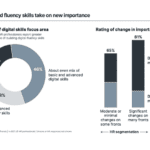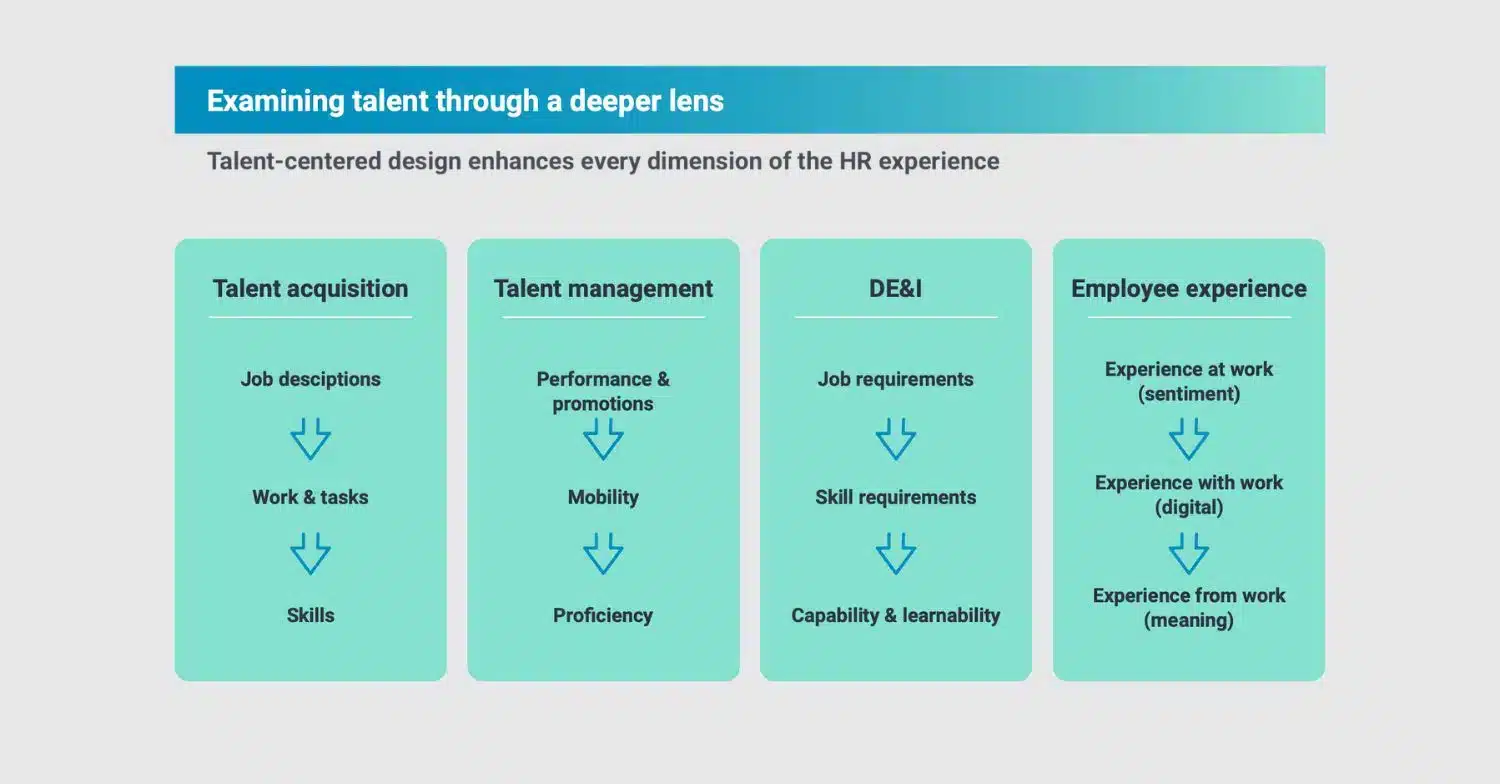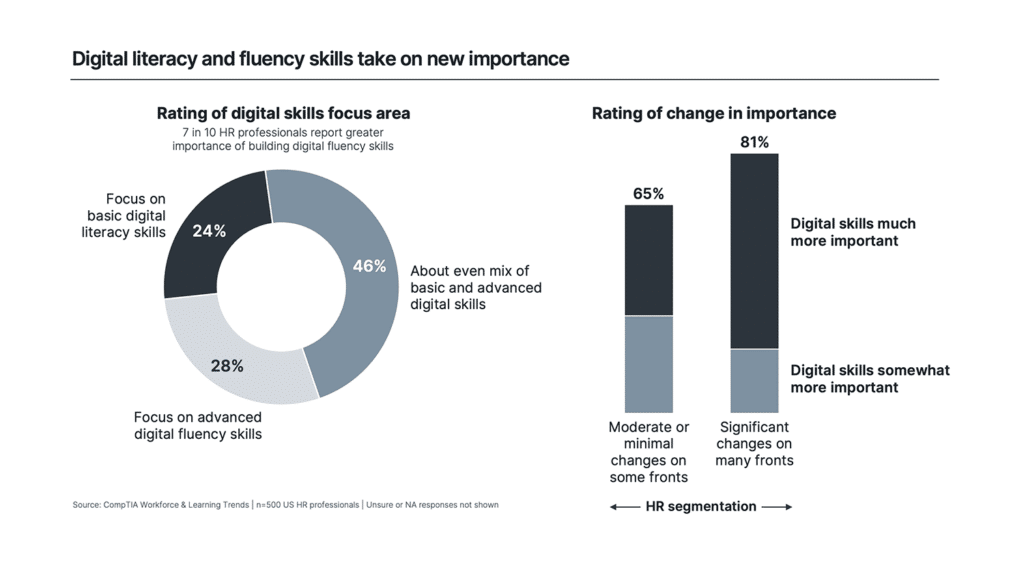How to build an agile and flexible workforce with talent-centered design
- The evolution of work demands a new approach centered around talent and skills.
- You need a way to see real-time insights in the context of work, so you can gain a dynamic understanding of all your talent’s skills and capabilities.
- Talent-centered design better serves your entire workforce, from C-suite objectives to employee career pathing and improved candidate experiences, with a focused, agile approach.
Today, we know that transforming your workforce is bigger than optimizing some new technology or process. It requires a radical shift in the way we think and approach talent planning for the digital age.
We are facing an unprecedented pace of change in technologies and the necessary skills to work with them. Alongside this change is the increasing uncertainty we all face every day, on a global scale.
We can no longer keep up by doing things the same. Unfortunately, too many of us are still using systems, processes, and procedures to manage talent that were built for a world of work that is drastically different from the one we are facing today.
To complicate matters, we are currently in the midst of a massive skills-based shift. According to the World Economic Forum, as many as 375 million people will need to be reskilled by 2025. As many as 83% of organizations are in the middle of re-engineering their career programs according to EY, and Korn Ferry predicts as much $8.5 trillion in unrealized revenue due to this skills crisis.
With this in mind, we need to think beyond process and talent optimization and embrace transformation through skills-based strategies. We need to truly shift to reframe and rethink our approaches to planning and predicting future needs through gaining a dynamic understanding of skills mapped to talent in the context of work.
Our latest e-book, Talent-centered design: A blueprint for success in the digital era, will guide you through why you need to build an agile and flexible workforce so you can get the results you need with a skills-based approach. The evolution of work must be centered around talent and skills — and an AI-native talent intelligence platform that delivers real-time insights is the only way to gain a dynamic understanding of all your talent in the context of work.
Welcome to this new way of working that will set your organization — and talent — up for success.
What we mean by talent-centered design
Talent-centered design means putting your talent at the center of everything you do.
As talent leaders, we’ve traditionally centered decision-making around jobs. Listing jobs, matching candidates to jobs, and even eliminating jobs when they become outdated.
There is a better way.
Jobs can be broken down into skills. And once you have a complete view of the skills in your organization, you can start mapping work to skills — and bringing in the right talent with those skills to do that work.
Our definition of talent-centered design puts the talent profile at the foundation of everything you do. By integrating this complete understanding of skills, experiences, and interests, you create a dynamic understanding of what people are capable of doing, what they can learn, and what they want to do.
This real-time view of your talent’s skills will help you match people to the work at hand — not a static job — and set you up for success in new and evolving ways of work.
Why you need to examine talent through a deeper lens
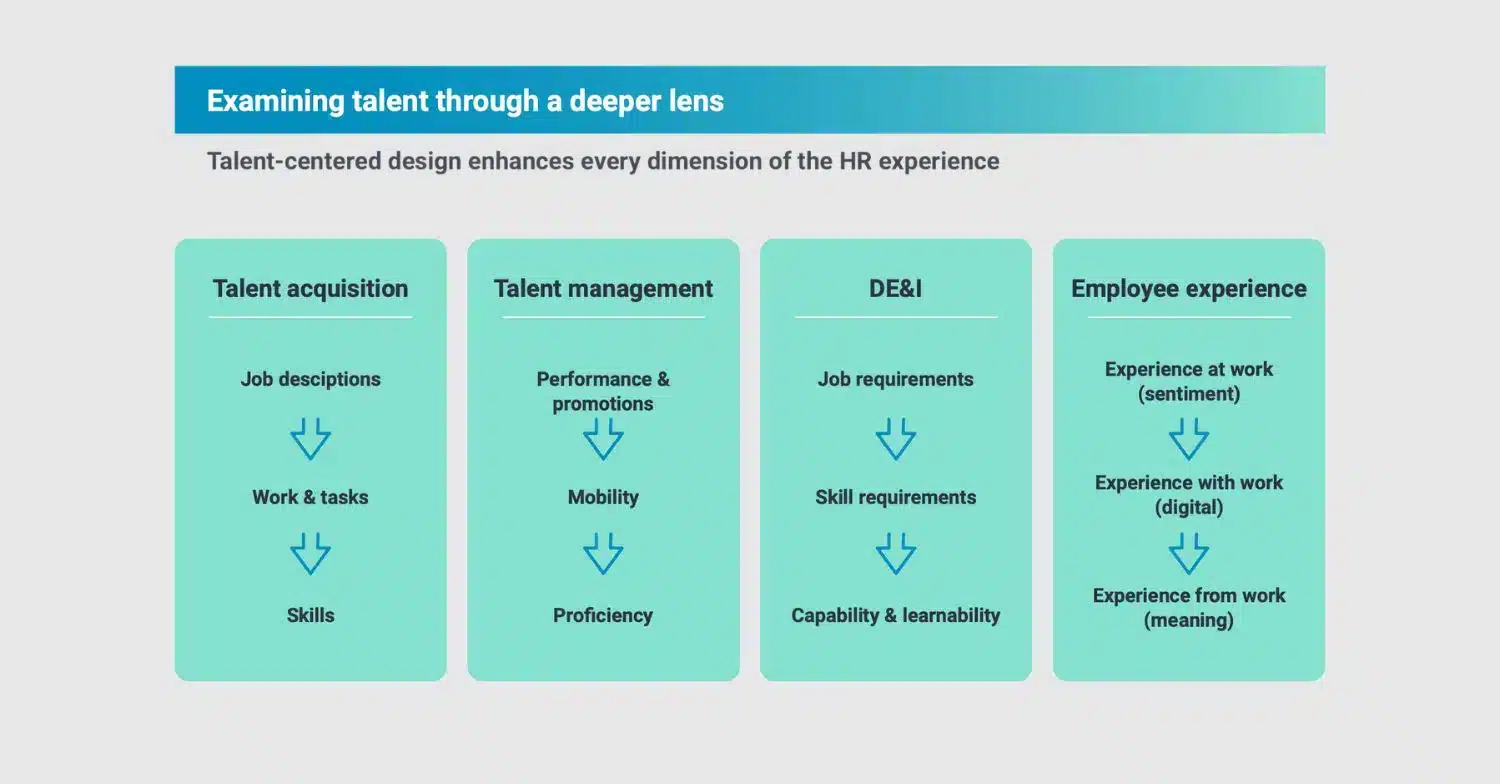
We’ve found that as organizational leaders increasingly adopt skills-based strategies, they recognize the need to examine talent through a deeper lens. Skills are essential, but without context, these are merely data points.
Truly understanding the skills involves breaking down processes and moving beyond job titles and descriptions to gain a closer view of talent and work.
This approach is made even more essential because the skills we use in the context of work are rapidly changing. This demands a deeper understanding of talent, beyond org charts or job descriptions, to a dynamic understanding of skills in real time.
The concept of talent-centered design should be embedded in every workforce-planning decision. Talent acquisition, talent management, diversity, equity, inclusion (DEI) practices, and employee experience can all benefit from this approach.
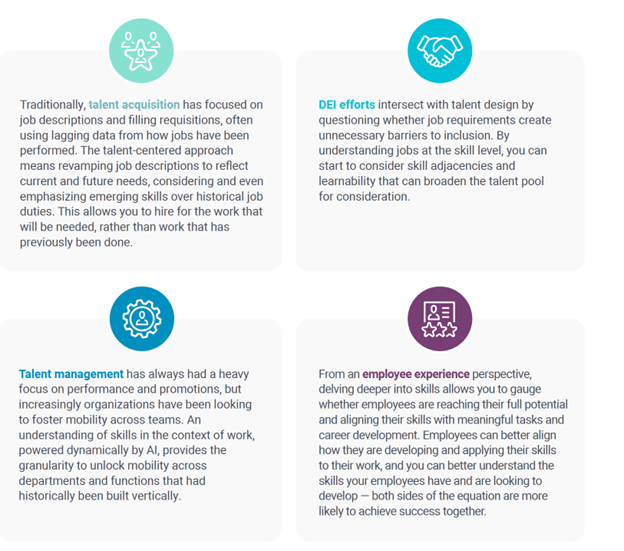
By adopting a skills-based approach, you can focus on talent at a deeper level, taking into account skills, abilities, and career aspirations. This shift enables a more nuanced understanding of talent needs and facilitates better alignment between individuals and organizational goals.
Overall, talent-centered design emphasizes a holistic view of how to hire and manage talent through a focus on skills and meaningful work.
Start building a talent-centered organization powered by AI
Our Eightfold Talent Intelligence Platform is designed to help you effectively and efficiently understand, engage, and retain your workforce.
With our platform, you can find best-fit talent, identify and nurture internal talent, and create highly personalized learning and career paths for all employees. Whether it’s succession planning or building a robust workforce strategy, our platform is there to provide visibility into the skills you’ll need every step of the way to becoming a talent-centered organization.
Read our latest e-book, Talent-centered design: A blueprint for success in the digital era, and get started today.
The post How to build an agile and flexible workforce with talent-centered design appeared first on HR Executive.
